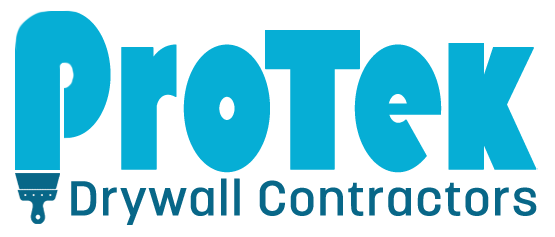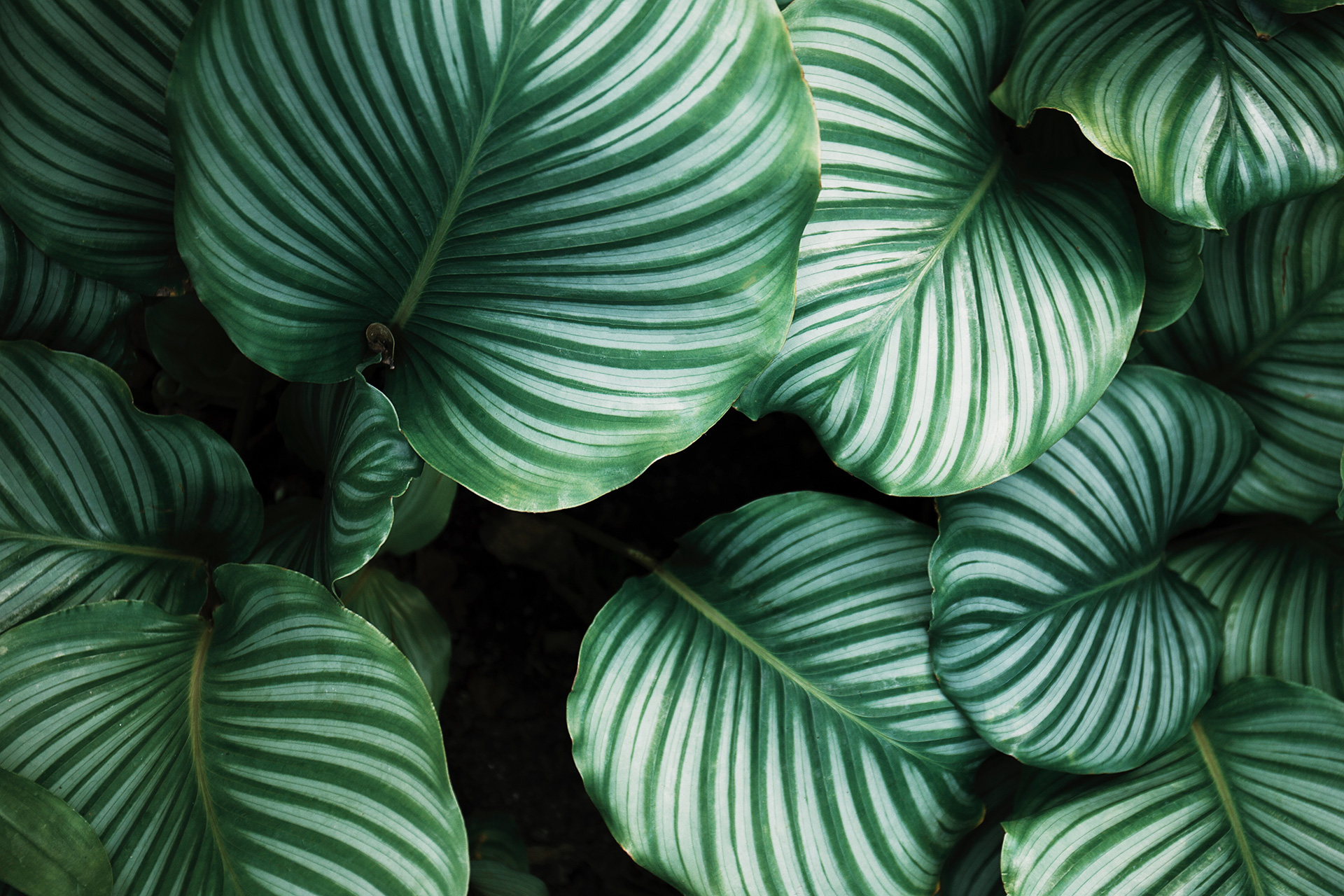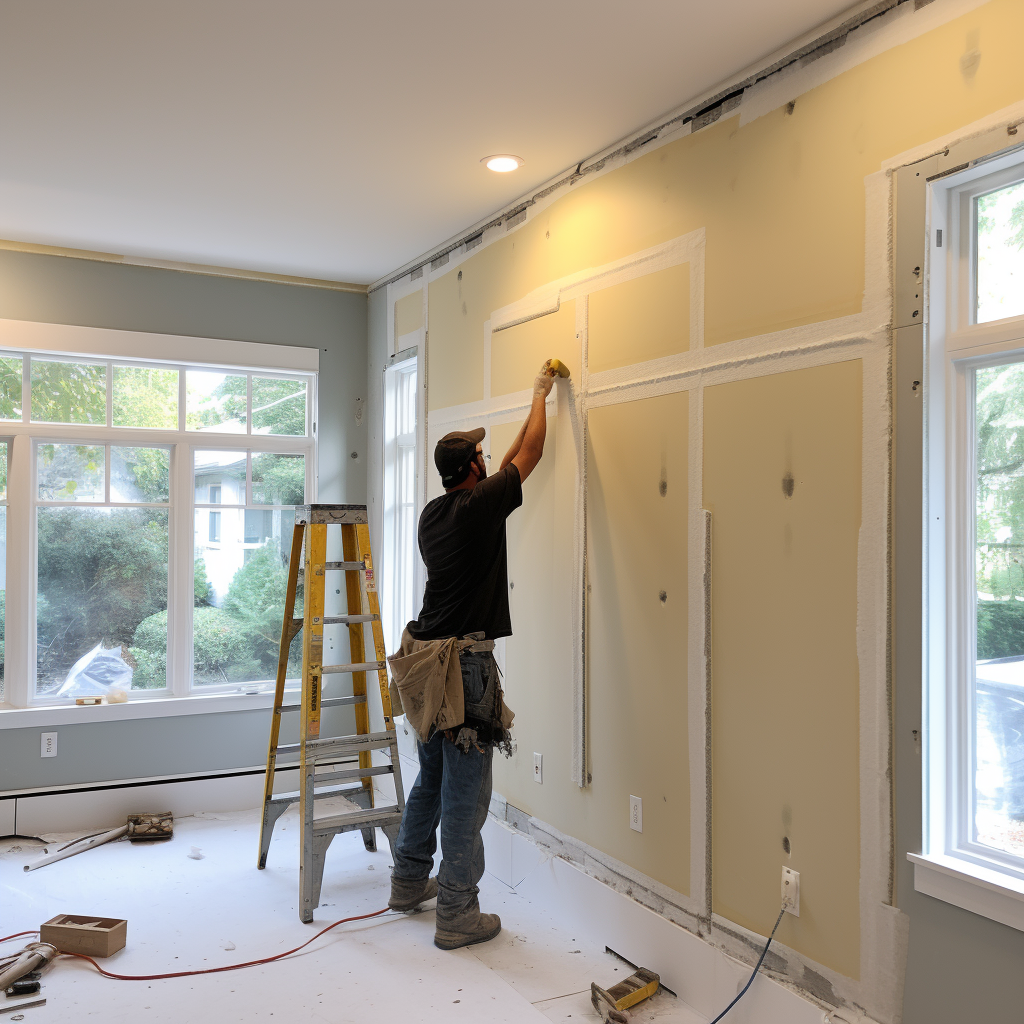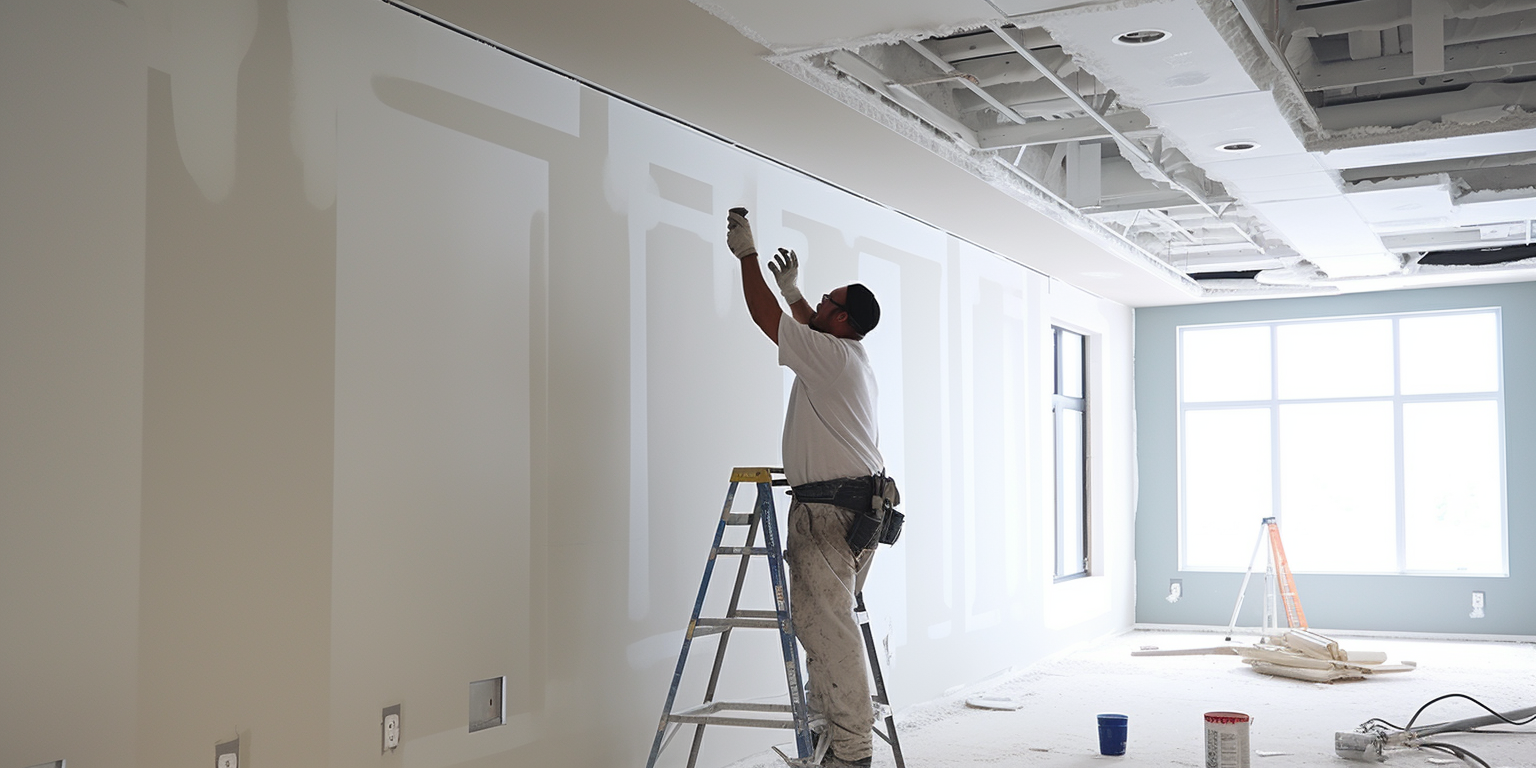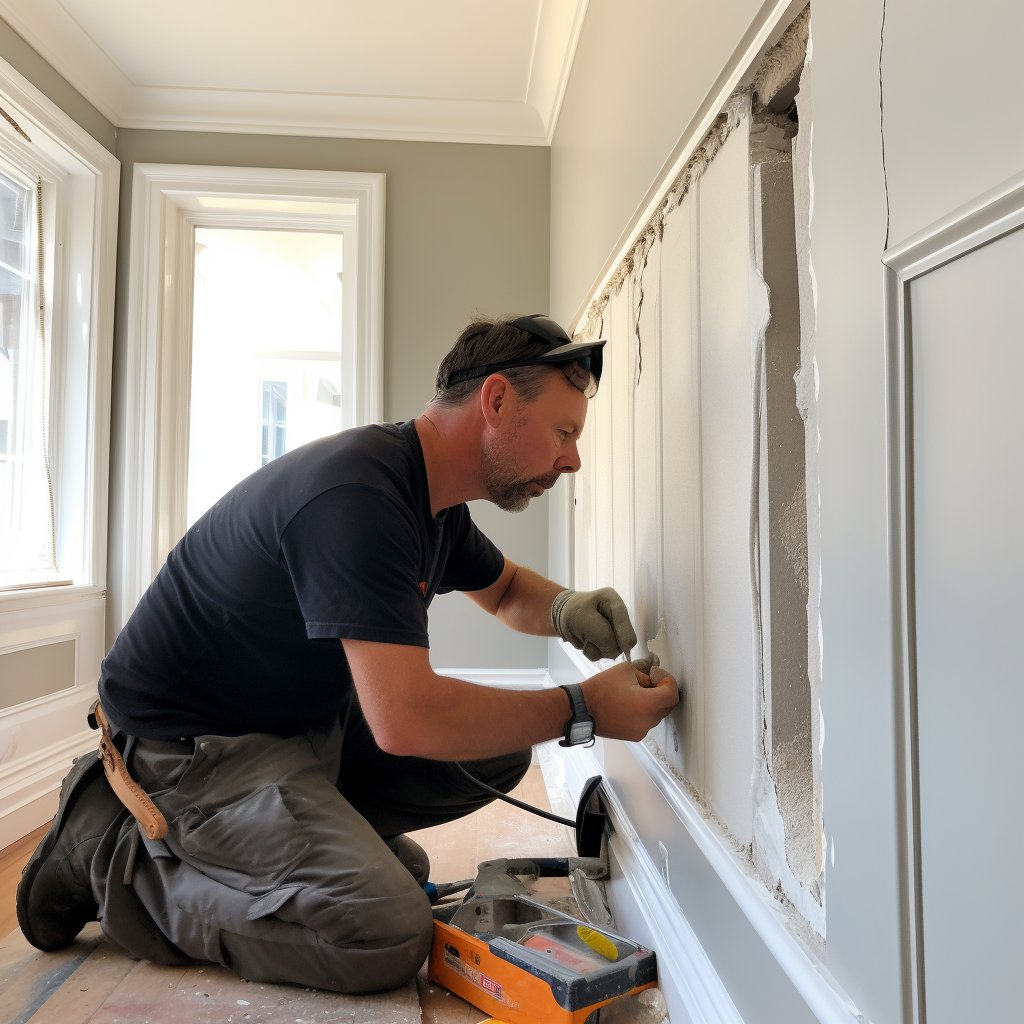Residential Drywall
Installs, Repairs & Removal
If you're looking for reliable and quality drywall installation for your home, you're in the right place! Whether you're embarking on a new home build or renovating an existing space, our experienced team is equipped to handle projects of all sizes. Using high-quality materials and tried-and-true installation methods, we ensure that every wall we work on is both durable and visually appealing. Beyond installation, we offer a range of services, from repairs to finishes, all aimed at enhancing the beauty and longevity of your walls. Discover how ProTek Drywall contractors stand out in the industry and can be a key partner in your next home project.
Book A Free Quote!
Use the contact form below to get in contact with ProTek and schedule a quotation or inspection!
Drywall Installation
At ProTek Drywall, we pride ourselves on delivering top-tier residential drywall installation services tailored to the needs of homeowners. Understanding that the foundation of any beautiful and durable interior lies in the quality of its walls, we are committed to providing installations that not only enhance the aesthetics of your home but also stand the test of time. Our reputation in the industry speaks to our dedication, precision, and the trust homeowners place in us for their drywall needs.
Diving into our process, it begins with meticulous measurements to ensure the drywall sheets align perfectly with your home's unique layout. Once the precise cuts are made, our team expertly fastens these sheets to the wall frames using sturdy screws, establishing a robust base. The next step involves the application of a joint compound to the seams, ensuring any gaps or overlaps are smoothly covered. To further enhance this seamless appearance, we employ taping techniques followed by thorough sanding. This multi-step approach ensures a uniform, ready-to-paint surface that's both visually appealing and resilient. With ProTek Drywall, every step is a stride towards perfection.
Home Renovations
We recognize that home renovations come with their unique set of challenges and requirements. That's why our residential drywall services extend beyond just new installations to cater to homeowners looking to rejuvenate or remodel their existing spaces. Whether you're transforming a dated room or repairing wear and tear from years gone by, our team brings the same level of dedication and expertise to ensure your walls become the perfect canvas for your renovation dreams. Leveraging top-quality materials and state-of-the-art techniques, we work diligently to seamlessly integrate new drywall with the old, ensuring a cohesive look and feel throughout your home.
Bathrooms
Home renovations, especially in spaces like bathrooms, come with unique challenges that ProTek Drywall is adept at handling. Bathrooms are particularly prone to high levels of moisture due to frequent water usage, which can, over time, compromise the integrity of walls and lead to mold growth—a health hazard for residents. Recognizing these risks, our drywall services for bathroom renovations prioritize the use of moisture-resistant materials and specialized techniques. We ensure that the drywall installed not only fits seamlessly into your design vision but is also robust against the constant humidity and potential water exposure. By choosing ProTek Drywall, you're investing in a bathroom space that's not only aesthetically pleasing but also durable, safe, and designed to withstand the rigors of its environment.
Kitchens
Kitchens, frequently bustling with activity, are areas exposed to a mix of moisture from cooking and the potential risks of accidental fires. Our specialized kitchen drywall services take these factors into account, ensuring that the walls can withstand both the everyday moisture challenges and offer an added layer of protection against fire hazards. By employing high-grade, moisture-resistant, and fire-retardant materials, we create a protective barrier that complements the kitchen's design while providing peace of mind. With ProTek Drywall at the helm of your kitchen renovation, you're guaranteed a space that is both stylish and fortified for safety.
Bedrooms
Bedrooms, whether situated upstairs or downstairs, are personal sanctuaries that demand a touch of serenity and resilience in their construction. ProTek Drywall's renovation services are finely attuned to the nuances of bedroom spaces across different levels of a home. Upstairs bedrooms often require specialized soundproofing to buffer against foot traffic noise, ensuring a peaceful retreat. Our team selects and installs drywall with superior sound-dampening properties to meet this need. For downstairs bedrooms, which might be closer to common areas or utilities, it's essential that the walls not only provide sound insulation but also have robust fire-resistant qualities for added safety. With ProTek Drywall's expertise, every bedroom renovation is approached with a keen sense of its unique position in the home, delivering tailored solutions that enhance both comfort and safety.
Hallways & Entrances
Hallways and entrances are the arteries of a home, guiding the flow of daily life and often bearing the brunt of high foot traffic. These areas are pivotal not just for the functionality of a residence but also its first impressions. ProTek Drywall's renovation services, tailored specifically for such high-traffic zones, prioritize durability without compromising aesthetics. Recognizing that hallways and entrances are frequently subjected to bumps, scuffs, and daily wear and tear, we utilize specially reinforced drywall materials designed to withstand these challenges. In addition, we focus on creating smooth transitions and finishes, ensuring that these spaces not only stand up to daily use but also present a welcoming, polished appearance. Entrust your hallways and entrances to ProTek Drywall, and experience a blend of resilience and style that caters perfectly to the dynamics of everyday living.
Living Rooms & Family Rooms
Living rooms, family rooms, and other common areas serve as the focal point of a home, where memories are forged, guests are entertained, and families come together. Recognizing their centrality, ProTek Drywall's renovation services are curated to make these spaces both inviting and enduring. Given the frequent use of these areas, it's vital that the drywall is both robust and capable of providing a pristine backdrop for décor and activities. We use top-tier materials designed for durability, ensuring that the walls can resist daily wear and still maintain their aesthetic appeal. Whether you're aiming for a cozy family movie night ambiance or an elegant space to host guests, with ProTek Drywall's expertise, your living and family rooms will seamlessly blend functionality with style.
Home Studios
In the modern age of remote work and artistic pursuits, home studios and offices have taken on heightened importance. For spaces like recording studios and music rooms, the quality of drywall isn't just about aesthetics but also acoustic performance. ProTek Drywall's specialized renovation services for such environments hone in on this dual requirement. We incorporate sound-dampening drywall solutions that effectively mitigate sound transmission, ensuring crystal-clear recordings and providing a quiet workspace. These materials act as a barrier, preventing sound leakage into or out of the room, thus creating an ideal sound environment. Whether you're an emerging artist seeking studio-grade acoustics or a professional needing an undisturbed workspace, ProTek Drywall's expertise ensures your home studio or office is tailored perfectly to meet both your functional and aesthetic needs.
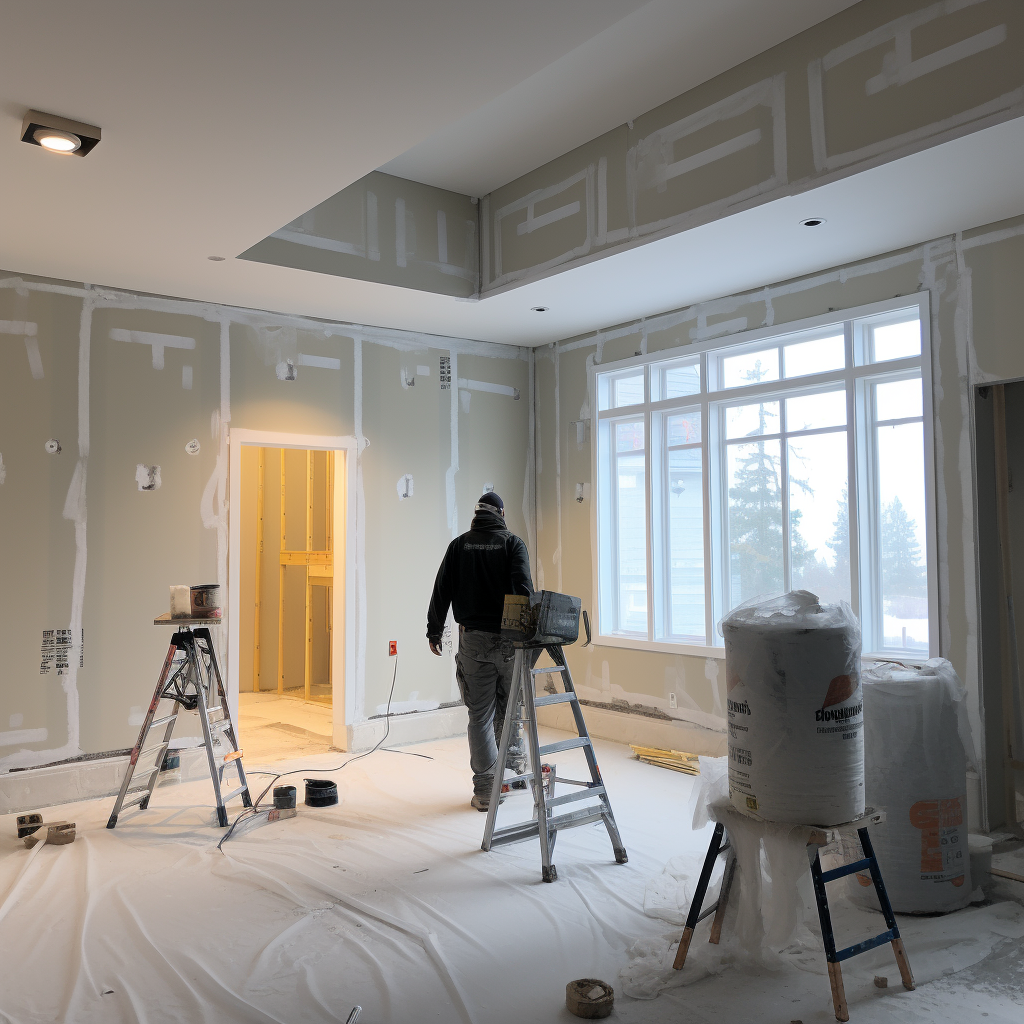
New Home Construction
For new home construction, choosing the right drywall services is essential. ProTek Drywall specializes in providing top-notch residential drywall solutions tailored to new builds. Homeowners searching for quality drywall installations or contractors needing the best drywallers on their site will quickly find that our reputation stands out in the industry. We ensure every wall is strong, smooth, and ready for the next stages of decorating. By focusing on delivering consistent quality and utilizing the best materials, ProTek Drywall ensures that your new home has the solid foundation it deserves. Whether you're building a cozy cottage or a sprawling estate, trust in ProTek Drywall for a job done right.
Bathrooms
In new home construction, bathroom drywall installation demands particular attention due to the unique challenges posed by these spaces. Bathrooms are exposed to high levels of moisture and varying temperatures, which can impact the longevity and condition of the walls. ProTek Drywall recognizes these intricacies and offers specialized drywall services to the Richmond area tailored for bathrooms in new builds. Using moisture-resistant drywall, we ensure the walls can combat the daily steam from showers and baths, reducing the risk of mold and wall damage. Our skilled team focuses on creating a durable and water-resistant barrier that complements bathroom fixtures and designs. With ProTek Drywall's expertise, homeowners can expect a bathroom that's both aesthetically refined and resilient against the elements.
Kitchens
Kitchens, often dubbed the heart of the home, are bustling spaces where culinary magic meets daily family interactions. In new home construction, it's crucial that the drywall used in kitchens can withstand the mix of heat, moisture, and constant activity inherent to the space. ProTek Drywall brings its specialized expertise to the table, ensuring kitchens benefit from top-quality drywall solutions tailored to these demands. We utilize materials that resist moisture from cooking steam and provide a heat-resistant barrier, vital for areas near ovens and stovetops. Beyond functionality, our team ensures that the walls serve as a seamless backdrop, accentuating cabinetry, countertops, and appliances. With ProTek Drywall's services, new homeowners are assured of a kitchen space that's both durable and aesthetically harmonious.
Bedrooms
Bedrooms serve as personal havens within a home, spaces of relaxation and rest. For new home construction, it's vital that the drywall in bedrooms meets the standards of both comfort and aesthetics. ProTek Drywall offers specialized services tailored to the unique needs of bedroom spaces. Recognizing the importance of a quiet, serene environment, we focus on using drywall materials that aid in sound insulation, ensuring that outside noises are minimized. Furthermore, our team's precise installation ensures walls that are smooth and free of imperfections, providing a perfect canvas for paint, wallpaper, or any other design elements homeowners envision. With ProTek Drywall, new home bedrooms are crafted with a meticulous blend of function and form, ensuring optimal comfort for residents.
Garage & Shop
Garages and shops are spaces that demand both functionality and resilience when it comes to drywall installations. Recognizing the diverse needs of these areas, ProTek Drywall offers specialized services tailored for garage and shop renovations. Whether you're converting a garage into a more functional workspace or updating a shop to better serve your hobbies or business, our team ensures the drywall is installed to withstand the unique conditions of these environments. From resisting the wear and tear of tools and equipment to offering a durable surface that can handle temperature fluctuations and moisture, our installations prioritize longevity. With ProTek Drywall, homeowners can rest assured that their renovated garages and shops will have walls and ceilings that are both robust and seamlessly finished, elevating the utility and beauty.
Attached Garages & Workshops
Attached garages and adjoining workshops bring unique considerations to the forefront of drywall installation, given their direct connection to the main residence. ProTek Drywall specializes in services tailored for these integrated spaces. We acknowledge the importance of ensuring a seamless transition between the home and the garage or workshop while maintaining the robustness required for such utilitarian areas. Key factors like sound insulation, temperature regulation, and fire-resistant barriers become paramount. Our team is adept at installing drywall that not only serves as a sturdy backdrop for tools and machinery but also provides the needed insulation to ensure energy efficiency and noise reduction. By choosing ProTek Drywall for your attached garage and workshop renovations, homeowners get a blend of practicality and aesthetics, creating a harmonious yet functional extension of the main living area.
Detached Garages & Workshops
Detached garages and standalone workshops often serve as independent spaces with specific functional needs distinct from the main residence. ProTek Drywall has honed its expertise in catering to the unique requirements of these separate structures. Given their detachment, considerations around insulation, moisture resistance, and security become particularly pronounced. Our team installs drywall that stands up to these challenges, ensuring that these spaces remain protected from the elements and maintain a stable internal environment, suitable for storing vehicles, tools, or conducting workshop tasks. The aesthetics aren't compromised either; our installations provide a smooth, polished look that can be customized to match the design of the main house or given its own distinct appearance. With ProTek Drywall handling your detached garage or workshop renovation, you can be confident in both its durability and visual appeal.
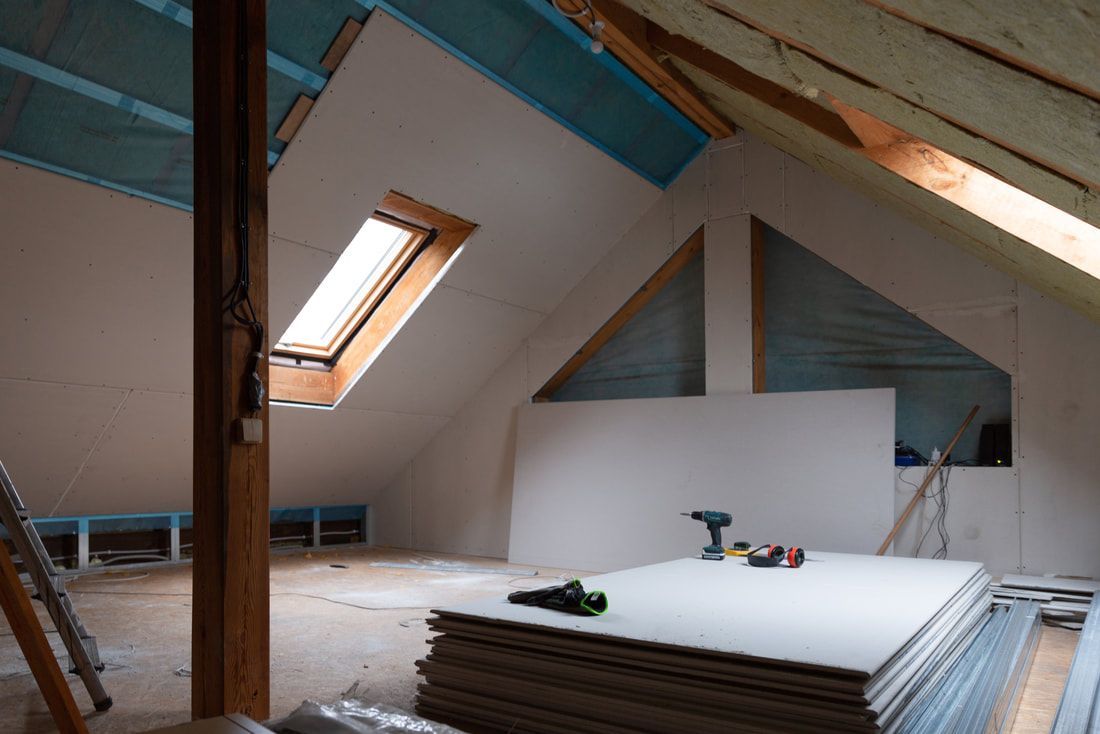
Ceiling Drywall
Ceilings are often the unsung heroes of interior design, significantly influencing a room's feel and acoustic qualities. We understand the importance of a perfectly installed drywall ceiling. Specializing in residential spaces, our team offers comprehensive ceiling services that encompass not only the installation but also the finishing touches that make a difference. Using top-grade materials, we ensure every ceiling is seamless, durable, and resistant to common issues like sagging. Beyond just installation, our expertise extends to texture applications and finishes, allowing homeowners to customize their ceilings to match their desired look and feel. With ProTek Drywall, you get more than just a ceiling; you get a masterpiece that complements and elevates the overall ambiance of your home.
Basement Ceilings
Basement ceilings come with their unique set of challenges and opportunities. Often acting as a cover for wires, pipes, and ductwork, the right drywall installation is paramount to achieving a polished, yet functional look in these lower-level spaces. ProTek Drywall excels in offering tailored solutions for basement ceilings in residential settings. We understand that homeowners seek a blend of aesthetics and practicality, and our team has honed its skills to deliver just that. Using specially designed drywall that resists the common moisture and mold challenges basements often face, we ensure longevity and durability. Our installation techniques also factor in easy access points for potential maintenance needs without compromising on a smooth finish. With ProTek Drywall at the helm, transforming a basement into a comfortable living space with a professional-grade ceiling becomes a seamless experience.
Main Floor Ceilings
Main floor ceilings hold a special significance in any home, as they are often the first impression guests receive upon entering. They set the tone for the rest of the house and play a critical role in the overall aesthetic and feel of the main living areas. At ProTek Drywall, our residential drywall ceiling installation services for main floors are designed with utmost precision and attention to detail. Recognizing the importance of these spaces, our team ensures a flawless finish that complements the architectural nuances of the main floor. Whether it's accommodating lighting fixtures, fans, or intricate designs, our skilled professionals adeptly handle the intricacies of main floor ceilings. Using high-quality drywall materials and advanced installation techniques, ProTek Drywall delivers ceilings that are not only structurally sound but also visually captivating, elevating the elegance of your primary living spaces.
Upper Floor Ceilings
Upper floor ceilings in residential homes require a blend of functionality and aesthetic appeal, given their direct impact on bedrooms, studies, and other personal spaces. ProTek Drywall's services for upper floor ceilings are tailored to meet these specific needs. We understand that, in these areas, sound insulation and temperature regulation play a vital role. Therefore, our installation techniques focus on creating ceilings that offer an added layer of noise reduction from rain, external noises, or even footsteps from potential attics or lofts. Additionally, the use of the right drywall materials ensures enhanced thermal insulation, adding to the comfort of the rooms below. Alongside the functional benefits, our team is committed to delivering a pristine finish, ensuring that each ceiling aligns harmoniously with the room's design and purpose. With ProTek Drywall, upper floor ceilings become a perfect fusion of form and function.
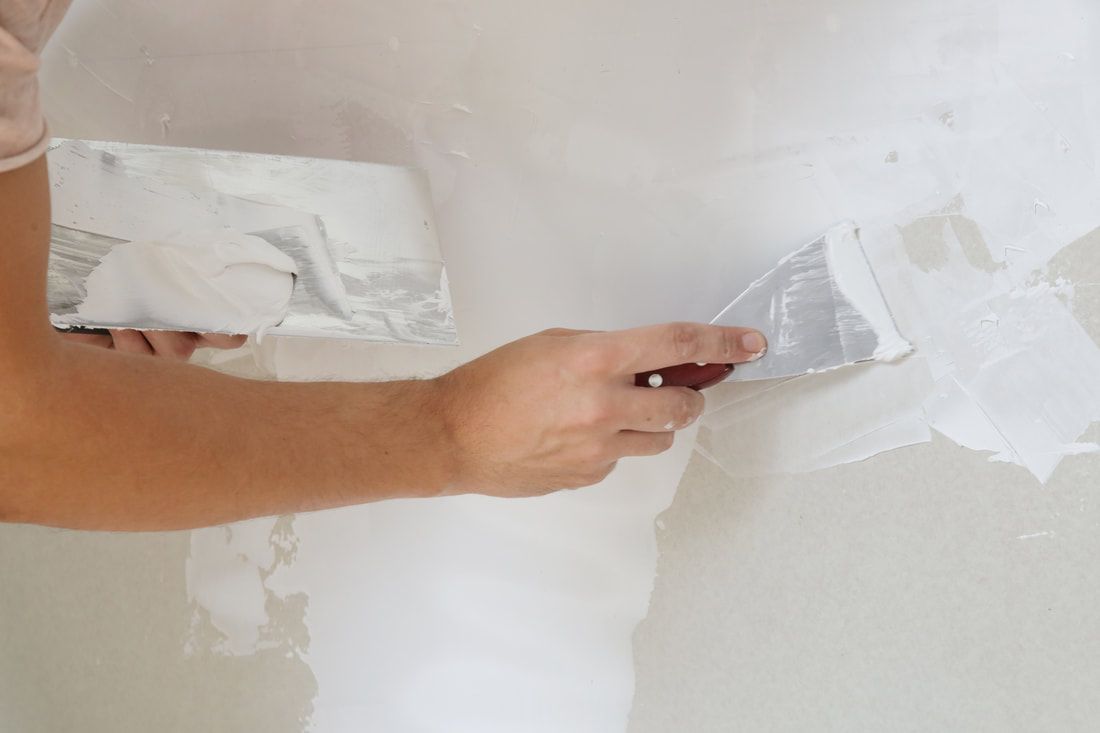
Drywall Repair
Every home encounters wear and tear over time, and the walls are no exception. ProTek Drywall’s residential drywall repair services address those inevitable dings, dents, and damages that can mar your home's interiors. Our specialized approach ensures that whether it's a small patch or a larger repair, the end result seamlessly blends with the existing wall, restoring its original look and integrity. Using top-quality materials, coupled with tried and true techniques, our team is adept at making blemishes disappear, ensuring that your walls look as pristine as the day they were first installed. By choosing us, Richmond’s favorite drywallers for your drywall repair needs, homeowners are guaranteed a renewed, flawless surface, enhancing the longevity and aesthetics of their living spaces.
Drywall Hole Repair
Holes in drywall, whether small from accidental bumps or larger due to installations gone wrong, can disrupt the visual flow of a room. Our specialized service in drywall hole repairs brings a keen focus to these common residential issues. Our expert team ensures that any hole, regardless of its size, is meticulously patched up, matching the texture and finish of the surrounding area perfectly. With a combination of the right materials and precision techniques, we make these disruptions vanish, giving your wall a consistent, smooth appearance once more. Homeowners can trust ProTek Drywall to not just patch a hole, but to restore the room's ambiance and the wall’s original integrity.
Drywall Crack Repair
Drywall cracks, whether due to settling homes or environmental factors, can be a cause for concern as they mar the aesthetics of a room and can signal underlying issues. Our specialized service in drywall crack repairs addresses this problem with a blend of expertise and precision. We don’t just fill in the crack; our process involves understanding its root cause to ensure a lasting solution. Utilizing premium materials and the latest techniques, our team seals and smoothens these cracks, restoring the wall to its seamless state. When homeowners choose ProTek Drywall for their crack repairs, they are choosing a service that prioritizes both the beauty and the structural well-being of their living space.
Drywall Ceiling Repair
Ceiling issues, often more concerning than wall damages, need a specialized touch due to their position and the challenges associated with gravity. ProTek Drywall is adept at handling drywall ceiling repairs, ensuring that any damage, whether it's from water leaks, structural issues, or other causes, is addressed with utmost precision. Our team is equipped to manage the unique intricacies of ceiling repairs, using top-notch materials and techniques to restore the overhead surface to its original state. With a focus on both aesthetics and structural integrity, ProTek Drywall ensures that homeowners can once again look up with confidence, knowing their ceiling is both secure and visually impeccable.
Drywall Water Damage Repair
Water damage on drywall is not just an aesthetic concern but can also indicate deeper structural issues or potential mold growth. Addressing drywall water damage requires a thorough approach that goes beyond surface-level fixes. Our team specializes in identifying the extent of the damage, ensuring all affected areas are treated. By removing compromised sections and ensuring the root cause of the moisture is addressed, we provide homeowners with a lasting solution. Using high-quality materials, the repaired areas are then seamlessly blended with the surrounding drywall, restoring the room's visual appeal while ensuring its safety and durability.
Drywall Smoke Damage Repair
Smoke damage on drywall can leave unsightly marks and an unpleasant odor that lingers. It's vital to address both the visible and hidden effects of smoke damage to ensure a healthy living environment. Our skilled team delves deep into assessing the extent of the smoke damage, removing soot and residues from the affected areas. By employing specialized cleaning and treatment methods, we not only restore the appearance of the drywall but also neutralize any residual odors. With a keen focus on thoroughness and attention to detail, homeowners can be confident that their interiors will regain their original charm, free from the traces and smells of smoke damage.
Drywall Move-In & Move-Out Repair
Moving in or out of a home can often lead to unexpected dings, dents, or holes in the drywall. Whether it's from relocating furniture or the general hustle and bustle, these blemishes can detract from a home's appeal or even become a point of contention between tenants and landlords. Our experienced team is well-equipped to handle move-in and move-out drywall repairs, ensuring any affected areas are seamlessly restored to their original state. With swift service and a careful approach, residents can transition to their next chapter, confident that their walls are pristine and free from any moving-related damages.
Mudding, Taping & Sanding
The perfect finish on drywall is a culmination of precise mudding, taping, and sanding - three essential steps that dictate the final appearance and quality of the installation. Our drywall contractors are skilled in executing each of these stages with attention to detail. Mudding fills in seams and covers screws, creating a seamless surface. Taping reinforces these joints, ensuring durability. Finally, sanding perfects the surface, preparing it for painting or texturing. By prioritizing these processes, we ensure that each wall stands as a testament to smoothness and durability, ready to be the perfect canvas for homeowners' design aspirations.
01
Drywall Mudding
Mudding is a pivotal step in the drywall installation process, laying the groundwork for a smooth, uninterrupted surface. It involves applying compound to the seams between drywall panels and covering the screws or nails used during installation. The purpose is twofold: to ensure that the wall is visually seamless and to provide a robust bond between sheets. Our mudding process uses premium compounds, applied in layers, ensuring that as it dries and shrinks, another layer can be added, ultimately leading to a flawless surface that's both durable and aesthetically pleasing.
02
Drywall Taping
Once the mudding process is complete, taping takes center stage. Taping reinforces the mud-filled seams and ensures that the joints are strong and resistant to cracks. By embedding tape in the wet compound, we ensure that the drywall panels remain bonded together, offering additional strength and stability to the entire wall or ceiling structure. Our team uses quality tapes designed for optimal adherence and longevity, guaranteeing that the finished product not only looks impeccable but also stands the test of time, even in high-traffic areas.
03
Drywall Sanding
The final touch in achieving a pristine drywall finish is sanding. This process smoothens the dried compound to create an even surface that's ready for painting or wallpapering. Proper sanding is crucial to eliminate any ridges or imperfections that might become visible under paint or light. We utilize advanced sanding tools and techniques, ensuring minimal dust and a uniformly smooth surface. Attention to detail during this stage ensures that the subsequent layers of paint or texture adhere uniformly, resulting in a polished and professional appearance for any room.
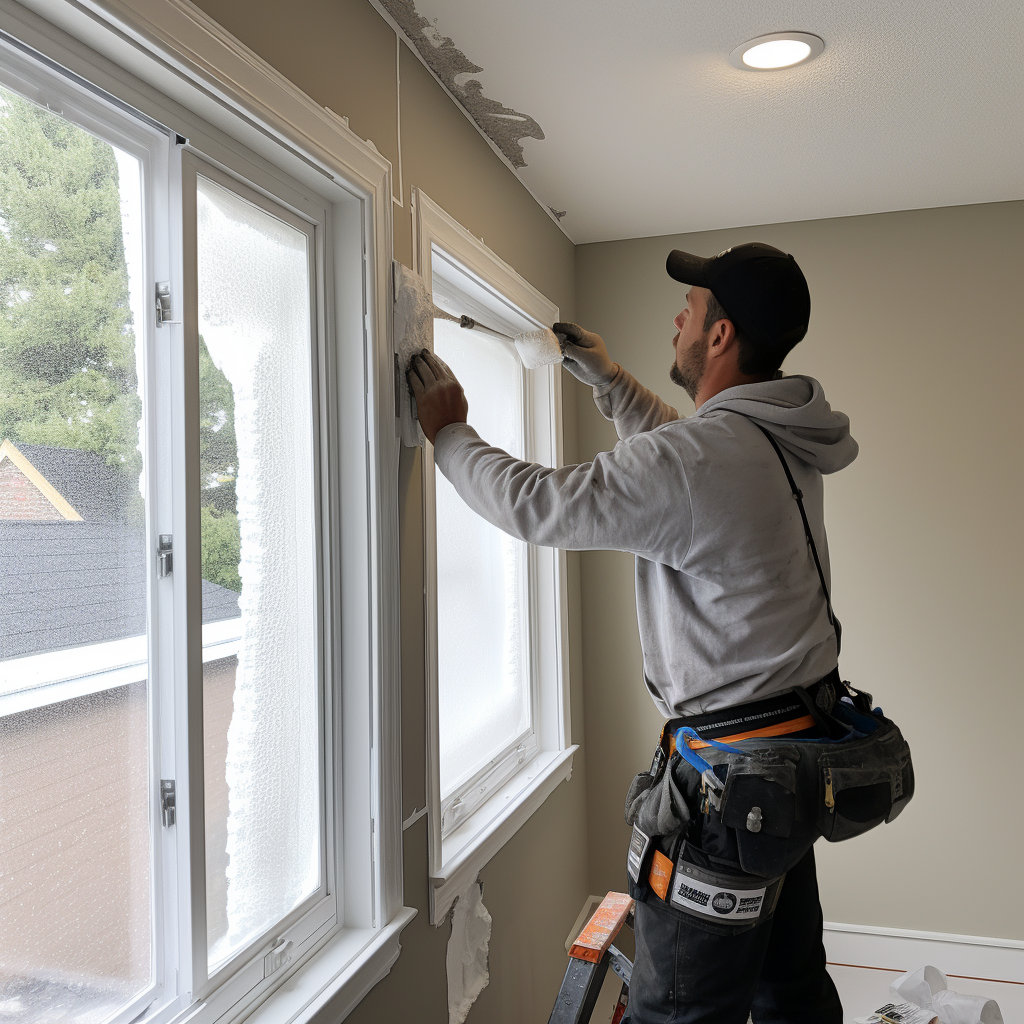
Drywall Removal
Drywall removal, while seemingly straightforward, demands a precise approach to ensure both efficiency and safety. Our residential drywall removal service is designed for homeowners looking to update, renovate, or reconfigure their living spaces. Whether you're making way for a new design layout, addressing water damage, or simply preparing for a fresh installation, our team ensures that the existing drywall is removed with minimal disruption. We prioritize safeguarding surrounding areas from debris, minimizing dust, and ensuring that structural integrity is maintained throughout the process. Trust in our expertise to provide a clean slate for your upcoming renovation endeavors.
Removing Damaged Drywall
When faced with damaged drywall, whether from water, mold, or physical impact, it's crucial to approach the removal process with precision and care. Our specialized service for removing damaged drywall ensures that the affected areas are addressed thoroughly, preventing further issues down the line. Beginning with a comprehensive assessment, we identify the extent of the damage and determine the best strategy for extraction. Using specialized tools, we delicately cut out the compromised sections, ensuring a clean removal without affecting the surrounding areas. The site is then prepared, free from debris and dust, ready for the subsequent repair or replacement. With our precise approach, homeowners can be confident that the damaged drywall is removed effectively, setting the stage for a flawless restoration.
Popcorn Ceiling Removal
Popcorn ceilings, once a popular choice, have now often become a point of contention for many homeowners seeking a more modern aesthetic. Removing this textured finish, however, requires a particular set of skills to ensure a smooth transition to a contemporary ceiling look. Our dedicated service for popcorn ceiling removal begins with a thorough assessment to determine if any asbestos is present, a common component in older popcorn ceilings. Once safety is confirmed, our team employs specialized techniques to moisten and delicately scrape away the popcorn texture. Following the removal, we ensure that the ceiling surface is primed and prepared, ready to embrace a fresh, modern finish. With our expertise, homeowners can easily bid goodbye to the dated popcorn ceiling and welcome a sleek, updated appearance.
Bedrooms
The process of drywall removal, while pivotal for home renovations, equally demands strict adherence to health and safety protocols to protect both the inhabitants and our crew. Our drywall removal service places a premium on safety. Beyond the obvious risks associated with handling heavy materials, drywall removal can release a myriad of particulates, like dust and, in older installations, potentially hazardous substances such as asbestos. Before commencing any project, our team conducts a detailed assessment to identify any potential health risks. We employ advanced tools and safety gear to minimize dust generation, ensure efficient containment, and provide thorough ventilation. In instances where special considerations like asbestos are a concern, our crew is trained in its safe handling and disposal. Entrust your home to us, knowing that health and safety are at the forefront of our operations.
